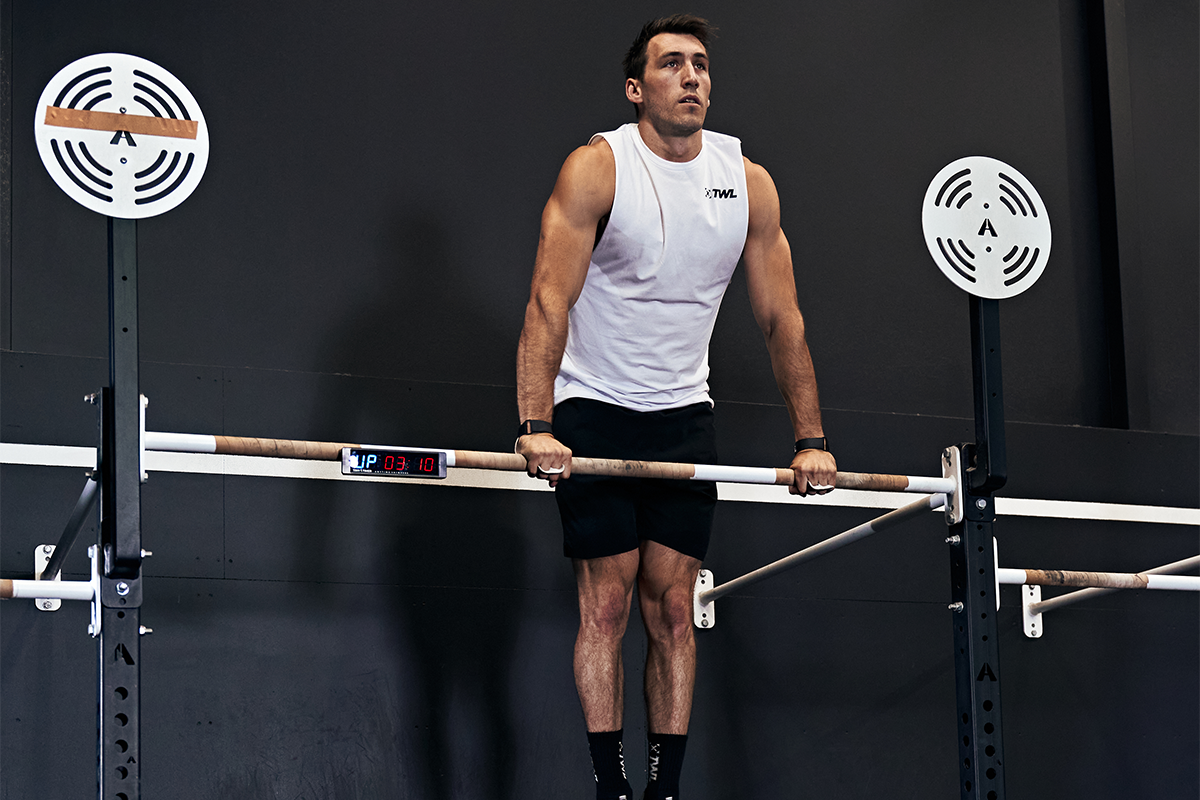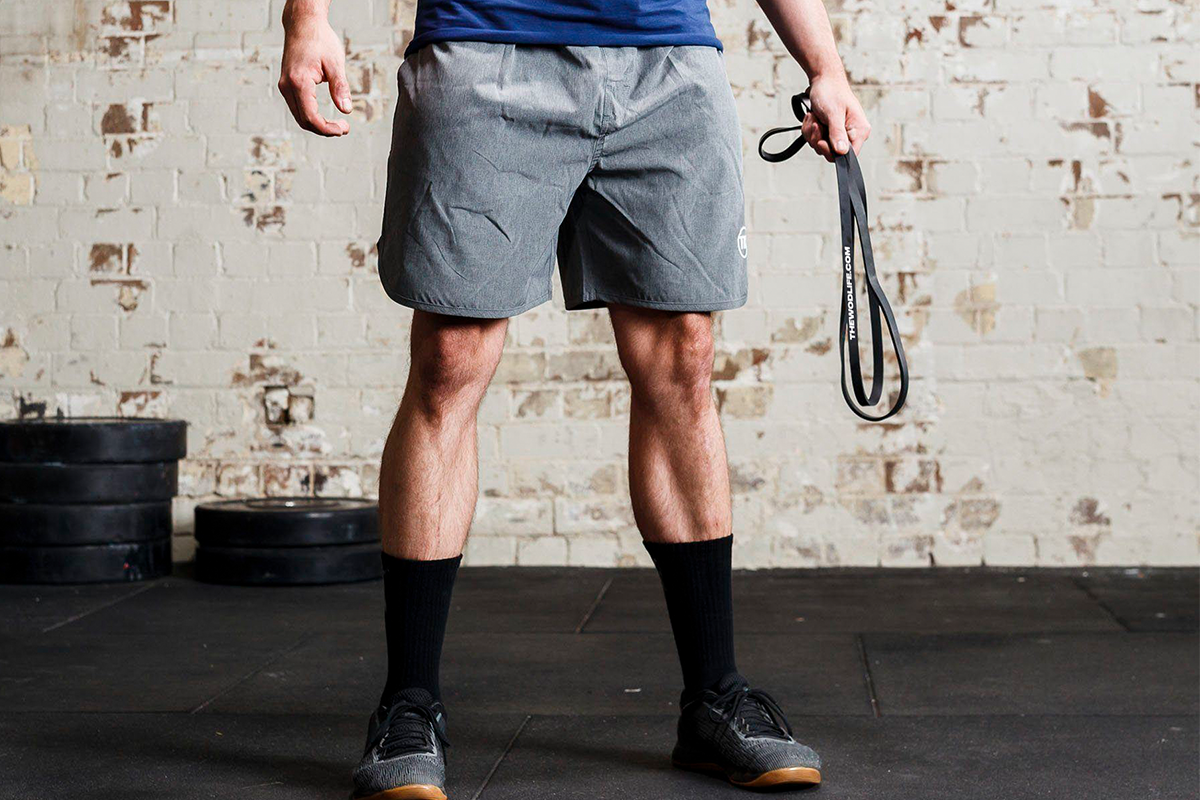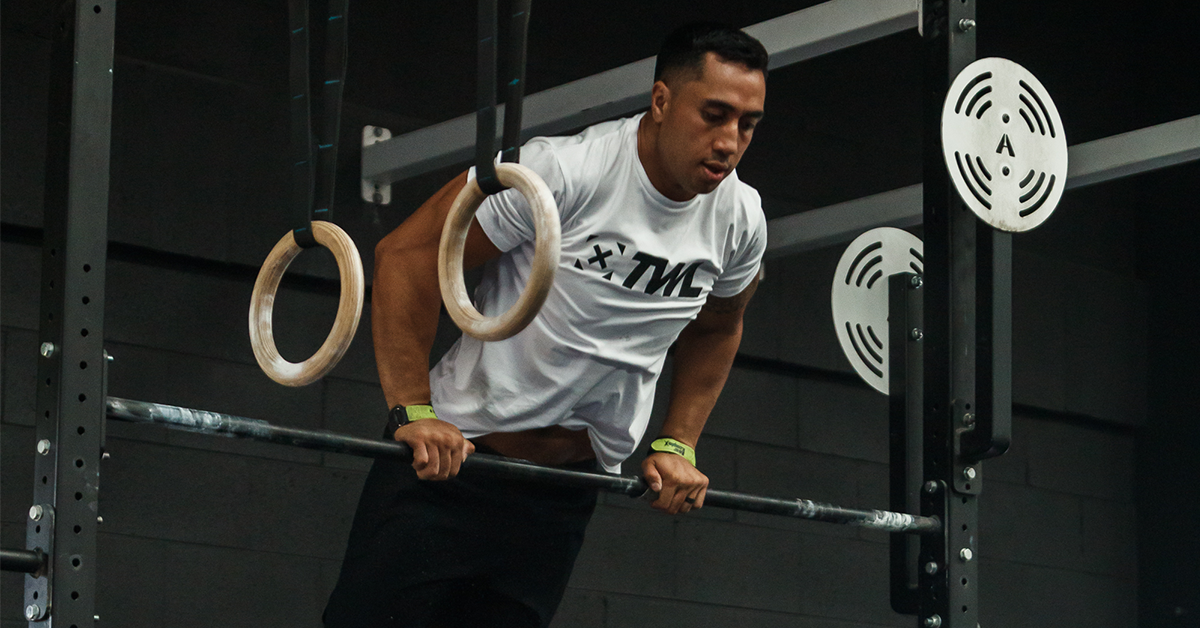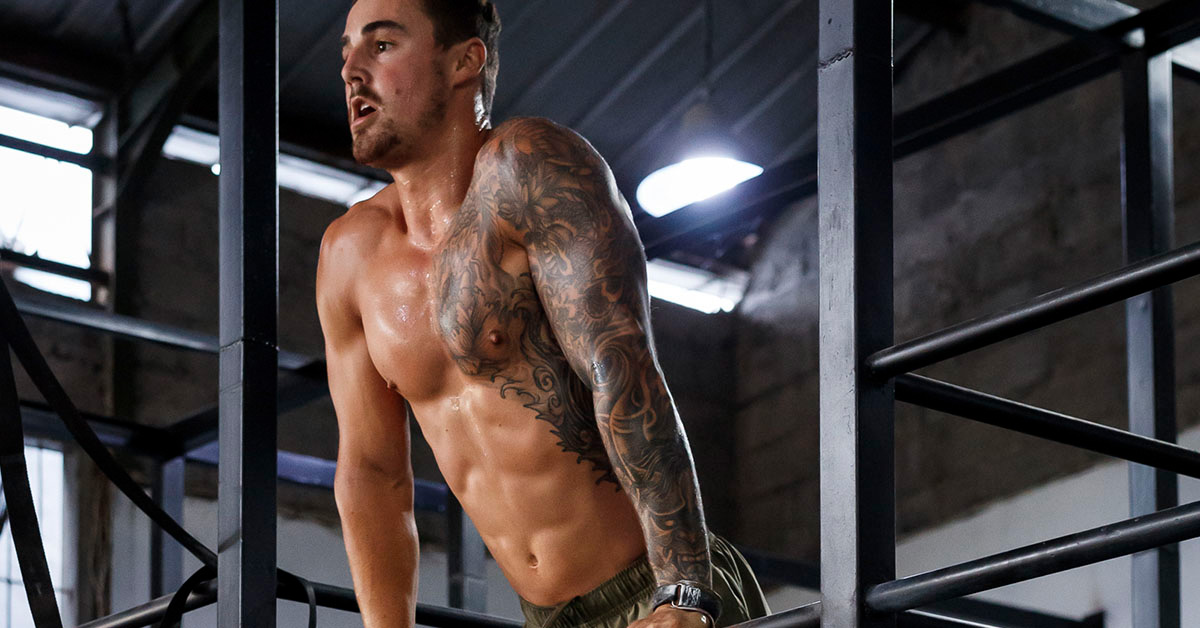Banded bar muscle-ups are an effective way to help build the strength and coordination needed to perform a bar muscle-up. This is where most athletes start! But how exactly do you do a banded bar muscle-up? What are the benefits? Let’s get into all the details.
What is a Banded Bar Muscle-Up?
A bar muscle-up is a gymnastics move in which the athlete grabs the bar, kips, and then uses their legs to “whip” themselves up and over the bar. You end in a dip position that you then need to press out of. Bar muscle-ups are typically easier than ring muscle-ups. With the rings, you have to stabilize them in every direction (since they’re moving objects), which is much more difficult. The bar, however, is a stable, unmoving object.
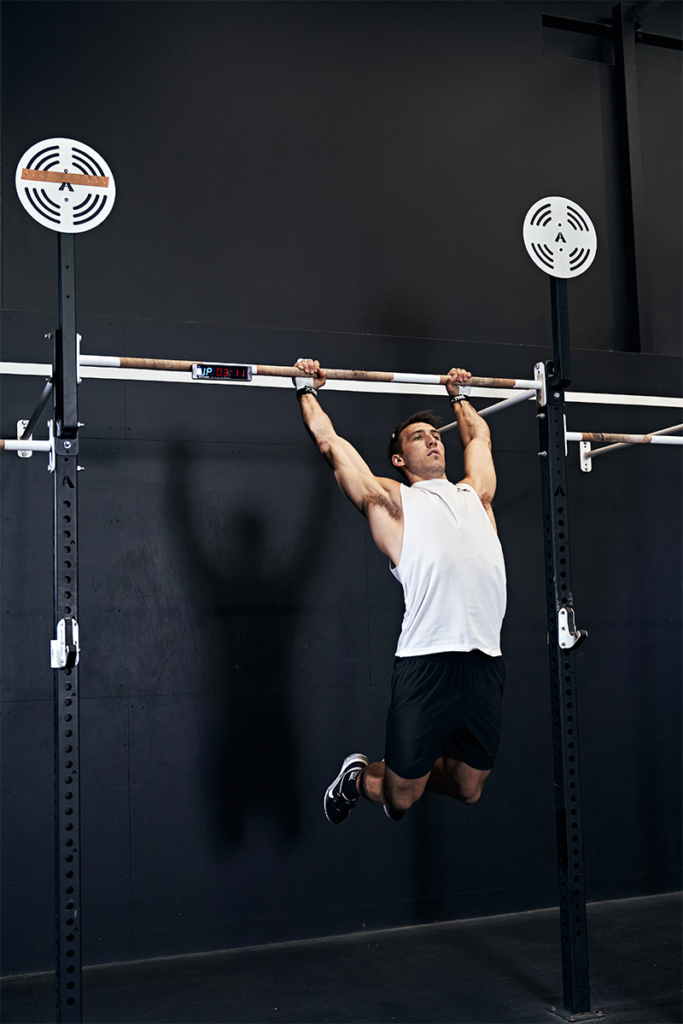
A banded bar muscle-up is a variation of the bar muscle-up in which a resistance band is used for assistance. It’s a common way to scale bar muscle-ups. This can be helpful if you’re new to the movement or if you’re struggling to perform it without assistance. What does the band do? Well, the band provides support as you pull yourself up and over the bar. It removes some of your own weight so that you have less to pull over the bar, making the muscle-up easier.
Think of it like having your gym mate give you a little boost! That’s what a band does.
Banded Bar Muscle-Up Prerequisites
Before you begin practicing banded bar muscle-ups, make sure that you can perform five to 10 strict pull-ups unbroken. This ensures that you have the necessary upper-body strength to safely perform muscle-ups. And remember that building this strength is also important for avoiding injury.
We know you’re excited to get to the fun stuff, but try not to skip steps.
How to Do a Banded Bar Muscle-Up in 5 Steps
Ready to give it a shot? Follow these steps to execute a banded bar muscle-up:
- Loop a resistance band around the pull-up bar. The thicker the band, the more it’s going to help you. See below for some ideas!
- Put one foot in the open end of the band and step onto it, so that the band is looping under your shoe.
- Cross your opposite ankle over the ankle with the band. This helps secure the band and hold it in place.
- Hang from the bar with your palms facing away from you and your arms fully extended. Engage your shoulders to pull your ears away from your shoulders.
- Kip (Superman into a hollow body position) and then in one smooth, continuous motion, pull yourself up and over the bar, leading with your head and keeping your hips close to the bar. Keep your body tight in the kip. Flailing around is a common mistake athletes make in the bar muscle-up.
- Once you’re over the bar and in the dip position, press out of it. At the end of the rep, your arms should be fully extended once again, and your upper body should be above the bar.
We know that this might be hard to imagine and digest. Check it out in action!
How to Pick a Band
If you’re new to the movement, then you might very well need a much thicker band — start there. If it feels like the band is literally going to rocket you over the bar, it’s too much. You can move to something thinner. To build strength and really practice your technique, you need to be able to do several reps unbroken. So, opt for a band that allows you to do that.
Shop Now
What are the Benefits of Banded Bar Muscle-Ups?
Bar muscle-ups are a great exercise for building upper-body and core strength, as well as improving coordination and timing. And what’s especially cool is that it’ll make you better at both pushing and pulling exercises, since the bar muscle-up includes both. Pushing means it’ll benefit push-ups and presses. Pulling includes stuff like rows. Bonus!
The move also helps develop explosive power, which can be useful in other movements like box jumps, sprints, and the Olympic lifts.
Banded bar muscle-ups will also help you maintain shoulder mobility since they require a pretty decent range of motion. Just make sure that you warm up your shoulders and wrists in advance. Wrist wraps (and hand grips) are also a huge help.
Shop Now
Are Banded Bar Muscle-Ups Effective?
When it comes to banded exercises — especially banded pull-ups — some athletes consider it “cheating.” (Insert the kipping debate here.) Worse, some say that they don’t even count and won’t help you work toward Rx’d bar muscle-ups anyway.
Our opinion? Bands aren’t cheating. They’re a tool that you can use to scale a movement as you build up the necessary strength to perform it without a band. Can you use a band to cheat? Absolutely. Is it possible to use them in an effective way? You bet. As you practice your banded bar muscle-ups, you should be swapping the bands out for thinner ones over time. This means you’re improving! Just remember that the band is a supplement for strength, not a replacement.
When you’re first practicing with a band, you might notice that the movement feels a little… off. This is another reason some athletes are anti-band. Yes, to a small degree, bands change the way a movement feels. That’s because they push up on your feet — a sensation you won’t have once you’re performing bar muscle-ups unassisted. Just know that an unassisted muscle-up doesn’t totally feel simply like a harder version of a banded bar muscle-up. Not only will you have to lift the weight of your entire body, but the way gravity acts on you is also going to be a little different.
If you’re ready to start training, you need the right equipment. Shop our selection of bands today!

